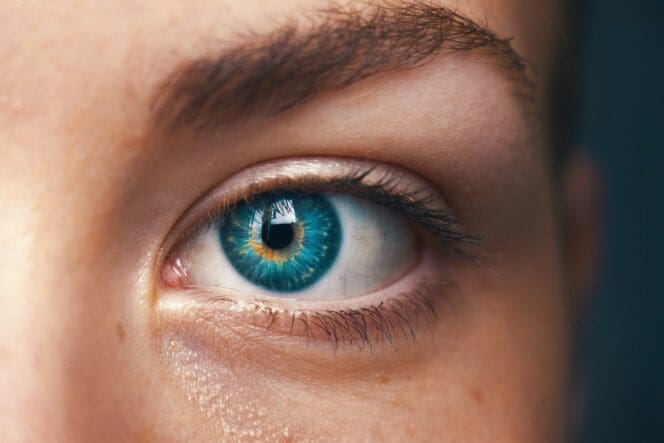Home /
LASIK Eye Surgery: Your Comprehensive Guide
LASIK is a refractive surgery designed to diminish the need for corrective eyewear, such as contact lenses or prescription eyeglasses.

LASIK surgery, or laser-assisted in situkeratomileusis, uses a laser to correct refractive errors in the eyes. A refractive error, such as hyperopia (farsightedness), myopia (nearsightedness), or astigmatism (irregularly shaped cornea), can cause vision issues.
LASIK is a quick procedure performed in a specialized clinic or eye center by an ophthalmologist. While there are some risks associated with any surgery, LASIK is extremely common and has high success rates.
Insurance does not regularly cover LASIK, but there are options for discounts and payment plans. Ultimately, LASIK can reduce your eyecare budget in the long run.
What Is LASIK?
LASIK uses an excimer laser to permanently change the shape of the cornea to correct refractive vision errors, the FDA explains. A refractive error occurs when the eye does not bend light the way it should.
Light rays pass through your cornea, the clear outer layer of your eye. The lens then bends the light as it travels to the retina. When the light does not focus on the retina due to the cornea or lens being misshapen, this is a refractive error that can cause blurry vision.
LASIK reshapes the cornea to correct hyperopia, myopia, and astigmatism, which are all refractive errors that cause vision problems. LASIK surgery can change the way light passes through to your retina, improving it and correcting vision.
Why Get LASIK?
Depending on the person, LASIK can even minimize the need for prescription eyeglasses and contact lenses completely.
LASIK can potentially correct vision enough that less correction is needed from prescription eyewear, such as contact lenses or eyeglasses. Depending on the person, LASIK can even minimize the need for prescription eyeglasses and contact lenses completely.
As a result, LASIK can reduce your lifetime eyewear costs, as you will likely need less correction. In addition, LASIK can improve vision almost immediately.
LASIK is a fast procedure that is done in the office with a quick recovery time. It can help adults with healthy eyes and a stable prescription (eyes that have not changed in at least the past year) to see more clearly. To be a candidate for LASIK, you need to have a prescription within the correctable range.
Typically, people get LASIK to correct nearsightedness, or myopia. LASIK can correct up to -12.0 diopters of myopia. You can also get LASIK to correct for +6.0 diopters of hyperopia (farsightedness) or +6.0 diopters of astigmatism.
Benefits & Risks
LASIK has many benefits, which can include the following:
- Vision correction
- Long-term financial savings
- Nearly instant results
- Minimal pain
- Improved self-confidence
As with any surgical procedure, LASIK can have some potential risks, which can include the following:
- Visual symptoms, such as halos around lights, double vision, glares, diminished night vision, or vision loss, are possible in the short term.
- Increased dry eyes, especially if you already suffer from chronic dry eyes, can potentially occur, though rare.
- Undercorrection or overcorrection is possible, often due to unrealistic expectations about results.
- Results from LASIK correction can decrease with age in some farsighted people.
LASIK is a safe and effective procedure. Talk to your ophthalmologist about what to expect and to determine if you are a good candidate before the procedure to reduce the possible risks.
MyVision.org offers many resources to help answer questions about LASIK surgery, including how to find the best surgeon and questions to ask before your procedure. Consulting with an eye care professional prior to undergoing LASIK will ensure all your questions are answered, and you have all the instructions and directions you need to set yourself up for a successful procedure. We can help you find a highly rated LASIK surgeon near you.
Prepping for the Procedure
LASIK is an outpatient procedure that typically takes around 10 to 15 minutes per eye to complete.
LASIK eye surgery is an outpatient procedure that typically takes around 10 to 15 minutes per eye to complete. One or both eyes can be corrected during the session.
First, anesthetic drops are used to numb the surface of the eye. You will be awake; however, you may be given medication to help you to relax. You will be in a reclining position on your back in the ophthalmology clinic or specialty eye surgery center. An eyelid holder will be placed on the eye to prevent blinking.
The Procedure
A large laser system containing a microscope and a computer screen are used to complete the procedure. After the eyes are numbed with eye drops, a small flap is cut into the cornea, often using a femtosecond laser. Pressure is created. A clear plastic plate flattens the cornea, and laser energy separates the tissue to create a flap.
A mechanical microkeratome, which is a blade device, can also be used to create this flap. When using a mechanical microkeratome, a ring is placed over the eye, and pressure is used to create suction to the cornea.
Before the procedure, the surgeon will calculate how much tissue to remove from your cornea based on the level of correction you need, the shape of the surface of your cornea, the thickness of the cornea (to make sure there is enough tissue to perform the procedure), and your prescription for eyeglasses or contact lenses. A wavefront test is often done to measure how light travels through the eye.
You will be asked to stare directly at a light to fix your eye in a specific position for the laser. The excimer laser is then used to remove the precise amount of corneal tissue determined ahead of time.
After the cornea is reshaped, the corneal flap is replaced. Often, the surgeon will place an eye patch or shield over the eye to allow the flap to reattach itself without being disturbed.
Recovering From LASIK

You will need someone to drive you home from the procedure. The American Academy of Ophthalmology (AAO) recommends rest and relaxation for at least the first few hours after the surgery.
It is ideal to keep your eyes closed for the first two to four hours after the operation, so the flap does not move or become dislodged. You should avoid strenuous activity for the first day. You can typically resume normal activities the day after the surgery.
Your eyes may feel scratchy or like they are burning initially. This is temporary and usually goes away within a few hours after the surgery.
Your surgeon will discuss pain medication, what to expect, and how to manage it. Vision can also be hazy or blurry for the first day, but you should see vision improvement by the second day. Your surgeon will likely ask you to sleep with an eye shield for the first few days after surgery to protect your eyes while sleeping.
Be careful not to rub or touch the eyes for at least one week after the surgery. Avoid hot tubs, pools, or swimming in any body of water that could be contaminated or contain chemicals.
You can shower the day after your procedure. Just be careful to keep soap from getting into your eye.
Other things to avoid for at least the first week include the following:
- Contact sports
- Eye makeup or creams
- Free weights when weightlifting
- Direct sunlight
- Contact lenses
You will need a follow-up appointment within the first day or two after LASIK surgery to check on the healing process. Follow the instructions given by your doctor for LASIK recovery. This can often include wearing glasses for a short time, when needed, to let your eyes heal.
Typically, vision stabilizes within a few days after LASIK surgery. The healing process itself lasts about three to six months.
How Much Does LASIK Cost?
LASIK costs generally range between $1,000 and $4,000 per eye. Exact prices can vary greatly based on the following:
- Location
- Experience of the surgeon
- Type and level of correction needed
- Equipment used
- Eye health or particular conditions
LASIK is considered an elective cosmetic procedure, so it is typically not covered by medical or vision insurance. There are some vision or discount plans that offer reduced costs for LASIK when using specific providers. There are also financing and payment plan options available for LASIK surgery.
LASIK can be a large cost up front, but it can result in cost savings in the long run. It can save you money on costly prescription eyewear that needs to be replaced more often.
How Safe & Common Is It?
There is virtually no “fail” rate for LASIK. More than 95 percent of people are happy with their results.
LASIK eye surgery is one of the most common surgeries to correct refractive errors, with around 600,000 to 700,000 procedures done each year.
LASIK can often correct vision to 20/40 or even to 20/20. The results will depend on your specific eyes and the level of correction needed.
There is virtually no “fail” rate for LASIK. More than 95 percent of people who have the surgery are happy with the results. It is important to talk to your surgeon about what to expect before the surgery, so your expectations are realistic.
As with any surgery, there are potential side effects. Most of these will clear up on their own.
Dry eyes can occur for the first few months after surgery. Night vision issues, including glares and halos, can affect some patients for 6 to 12 months after LASIK eye surgery. Less than 5 percent of the time an additional LASIK surgery can be necessary to offer further correction.
Overall, LASIK is considered an extremely safe and effective procedure for adult candidates, in good health, with correctable refractive errors.
LASIK Enhancements
A LASIK enhancement is a secondary LASIK eye surgery after the first one. You will need to wait at least three months before getting a second surgery.
LASIK enhancements are generally done when the correction didn’t result in the best possible corrected vision or, more commonly, 5 or 10 years later to re-correct vision further. Eyes can change over time. A LASIK enhancement, while rare, can become necessary.
Presbyopia (farsightedness related to age) is not correctable with LASIK, so an enhancement is not warranted here. When an enhancement is an option to correct vision, you will need a good tear film, healthy eyes without additional issues, and enough corneal tissue to work with.
Ask your surgeon if a LASIK enhancement is the best option for further vision correction.
References
-
LASIK. (March 2018). U.S. Food and Drug Administration (FDA).
-
What Are the Risks and How Can I Find the Right Doctor for Me? (August 2018). U.S. Food and Drug Administration (FDA).
-
LASIK Eye Surgery. (November 2021). U.S. National Library of Medicine (NLM).
-
LASIK – Laser Eye Surgery. (October 2020). American Academy of Ophthalmology.
-
What Is LASIK Eye Surgery? (August 2020). JAMA Network.
-
LASIK Complication Rate: The Latest Facts and Stats You Should Know. (October 2021). Refractive Surgery Council (RSC).
-
How to Approach LASIK Enhancements. (October 2014). Review of Ophthalmology.
-
The 25th Anniversary of Laser Vision Correction in the United States. (March 2021). Clinical Ophthalmology.
Last Updated May 23, 2024
Note: This page should not serve as a substitute for professional medical advice from a doctor or specialist. Please review our about page for more information.